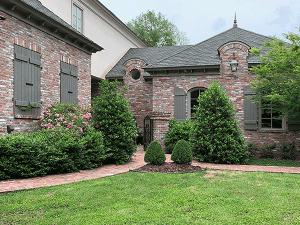The Enduring Superiority of Brick Over Fiber Cement Siding
While fiber cement siding is often marketed as a durable and cost-effective alternative for home exteriors, a closer examination reveals significant drawbacks compared to traditional brick. Fiber cement may initially seem appealing due to its modern appearance and fire resistance, but its long-term performance and maintenance requirements can diminish its value.
Fiber cement siding does offer a degree of fire resistance; however, its composition, which includes wood pulp, limits its effectiveness compared to the superior fireproof qualities of brick. Brick’s ability to withstand extreme temperatures without damage is well-documented and far exceeds the capabilities of fiber cement, which can only resist fire to a certain degree before the wood content becomes a liability.
One of the critical vulnerabilities of fiber cement siding is its susceptibility to impact damage. Tests have shown that it can be pierced by a 2×4 flying at just 25 miles per hour, a common hazard during hurricanes and severe storms. In contrast, brick is known for its robustness and can withstand high-velocity impacts, making it a more suitable option for areas prone to such weather conditions.
Maintenance is another area where fiber cement siding falls short. It requires annual inspections and maintenance to address issues like joint deterioration and repairs. These siding options often come with warranties that notably exclude damage from mold and mildew—common problems that can compromise the siding’s integrity and appearance over time. Furthermore, fiber cement needs periodic repainting and moisture protection, which adds to its total lifetime cost and effort.
In terms of aesthetics, fiber cement is prone to color fading due to UV radiation exposure, water absorption, and other environmental factors. Brick, on the other hand, maintains its color and structural integrity even under harsh conditions, thanks to its natural composition and exceptional durability. The need for meticulous maintenance on fiber cement—such as patching chips and dents, which must match the original texture and require specific safety measures against silica dust during repairs—can be a significant inconvenience.
Cost-effectiveness is another factor where brick clearly outshines fiber cement. Although the initial installation of fiber cement might be less expensive, the ongoing maintenance, potential for more frequent repairs, and shorter lifespan diminish its value. Brick offers a centuries-long durability with minimal upkeep, making it a more economically sound choice over time. It does not require the frequent maintenance that fiber cement does, and it contributes to energy savings by providing better insulation.
Ultimately, choosing brick over fiber cement siding is an investment in longevity, safety, and value. Homeowners who opt for brick benefit from its timeless appearance, exceptional durability, and overall cost-effectiveness, ensuring their homes are protected and beautiful for generations. This makes brick not just a building material, but a legacy.

